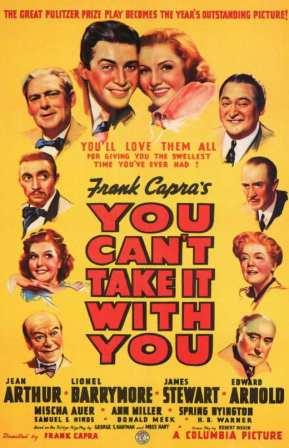“I was going up in the elevator [to work] and it struck me I wasn’t having any fun. So I came right down and never went back. Yes, sir, that was thirty-five years ago.” —Grandpa Vanderhof (Lionel Barrymore)
From his experience in directing Our Gang, Mack Sennett and Harry Langdon comedies, and a career that began in 1915 in silent features, Frank Capra was more than qualified to begin the first of a string of masterful comedies with Lady for a Day in 1933.
His next film the following year, It Happened One Night, remains one of the great romantic comedies of all time, and, with it, the director was on the map. In a film a year for the rest of the decade, except 1935 when he didn’t release a movie, came Mr. Deeds Goes to Town in 1936,Lost Horizon in 1937 and Mr. Smith Goes to Washington in 1939. Capra, most people’s favorite director in the ’30s, won the Oscar in 1934, 1936 and 1938, and two of the films earned him Best Picture.
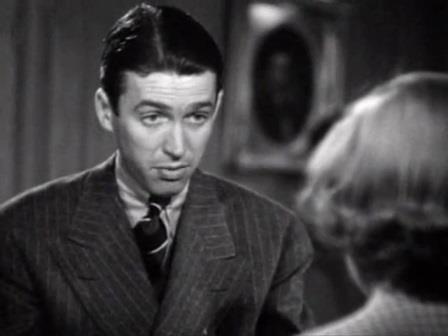 The ’40s were sparse for the director. Meet John Doe and Arsenic and Old Lace came early in the decade. The latter, finished in 1941, was not theatrically released until 1944, after distribution to U.S. troops worldwide in 1943. Capra spent four years in the U.S. Army photographic department before returning to Hollywood in 1946 and what turned out to be his last hit and last thoroughly competent, enjoyable film, It’s a Wonderful Life.
The ’40s were sparse for the director. Meet John Doe and Arsenic and Old Lace came early in the decade. The latter, finished in 1941, was not theatrically released until 1944, after distribution to U.S. troops worldwide in 1943. Capra spent four years in the U.S. Army photographic department before returning to Hollywood in 1946 and what turned out to be his last hit and last thoroughly competent, enjoyable film, It’s a Wonderful Life.
His only other film of the ’40s, State of the Union in 1948, with Spencer Tracy and Katharine Hepburn, had subtle suggestions of a decline that would be confirmed in the next decade. Capra’s sentimental, farcical films had gone out of style, replaced by provocative sex comedies, and making audiences laugh during the Great Depression seemed inappropriate after the reality-shock of World War II and unnecessary in the new-found prosperity of the ’50s. More crucial, the director had lost his touch for comedy and the joy of film-making. His final film, Pocketful of Miracles (1961), with Bette Davis, would be, as Gore Vidal wrote, “one of the all-time bad pictures.”
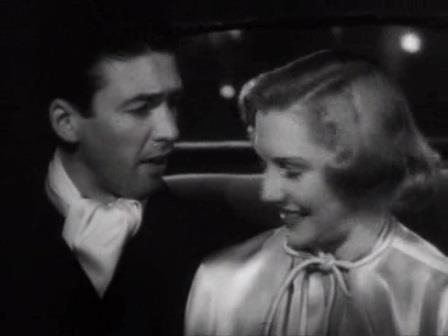 But to return to that one year, 1938, and the film omitted from the list of Capra hits that decade. You Can’t Take It with You, Oscar-voted Best Picture of the year (possibly three of the nine other nominations were better films), is a bit of a change in both thematic emphasis and method of filming for the director. First, while each of his other movies carry a “message”—greed, political corruption, the New Deal, the dangers of Fascism—the biting points of George S. Kaufman and Moss Hart’s play, references to the Red Menace and the alleged Communist influence in Hollywood, have been blunted or satirized in favor of more slapstick and unrestrained hilarity.
But to return to that one year, 1938, and the film omitted from the list of Capra hits that decade. You Can’t Take It with You, Oscar-voted Best Picture of the year (possibly three of the nine other nominations were better films), is a bit of a change in both thematic emphasis and method of filming for the director. First, while each of his other movies carry a “message”—greed, political corruption, the New Deal, the dangers of Fascism—the biting points of George S. Kaufman and Moss Hart’s play, references to the Red Menace and the alleged Communist influence in Hollywood, have been blunted or satirized in favor of more slapstick and unrestrained hilarity.
Second, Frank Capra was known as an extravagant film-maker, to the dismay of Columbia Pictures head, Harry Cohn. A dedicated perfectionist, Capra was notorious for endless takes, excessive film coverage and multi-camera setups for each scene. This time, he set out to economize. He went only four days over schedule and, excellent for him, only $65,000 over budget. But the shortcuts are evident in the finished film: generally some careless shooting, more specifically, lack of variety in cutting and single takes that would have benefited from a second or third, more polished version.
The plot of You Can’t Take It with You is simplicity itself. Tony Kirby (James Stewart) wants to marry, Alice Sycamore (Jean Arthur), the only member of a large wacky family who is gamely employed, or cares to be. Tony’s father, rich banker Anthony (Edward Arnold), wants to buy up a twelve-block section of town to put a competitor, Mr. Ramsey (H. B. Warner), out of business.
 But one household, a collection of family, friends and people off the street, refuses to sell, even when offered a huge sum by Anthony’s real estate broker (Clarence Wilson). The family is, of course, Alice’s. They just happened to be played by some of the great supporting players of the era, and are the crux of the movie, their eccentricities, antics, hobbies, subplots and all, though they all seem to get along.
But one household, a collection of family, friends and people off the street, refuses to sell, even when offered a huge sum by Anthony’s real estate broker (Clarence Wilson). The family is, of course, Alice’s. They just happened to be played by some of the great supporting players of the era, and are the crux of the movie, their eccentricities, antics, hobbies, subplots and all, though they all seem to get along.
First, and foremost, the head of this menagerie is kind Grandpa Martin Vanderhof (Lionel Barrymore, confined to crutches because of arthritis, here the opposite of his nasty banker character in It’s a Wonderful Life). Grandpa collects stamps and has definite views on patriotism: “Communism, Fascism, voodooism—everybody’s got an ‘ism’ these days,” he says, and the opposite of Patrick Henry, John Paul Jones and Mark Twain who “didn’t run around looking for ‘isms.’ ”
Mrs. Sycamore (Spring Byington, nominated here as Best Supporting Actress) accidentally happened upon a typewriter, so it seems only natural that she spends her time writing unproduced, and as can easily be assumed unproduceable, plays. She also paints.
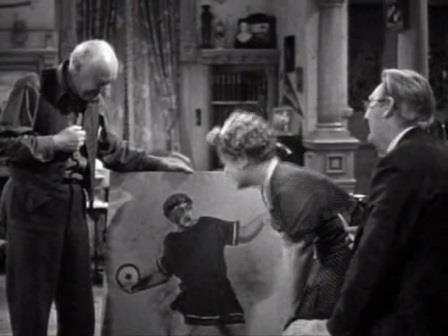 Mr. Sycamore (Samuel S. Hinds, Stewart’s father in It’s a Wonderful Life) and Ed Carmichael (Dub Taylor in his film début, and later often seen as a scraggly sidekick in Westerns) make fireworks together. And Ed provides accompaniment on his xylophone—Taylor was an accomplished player—for his daughter, Essie (a fifteen-year-old Ann Miller), to do her pirouettes and bourrées, watched over by her ballet instructor Potap Kolenkhov (Mischa Auer).
Mr. Sycamore (Samuel S. Hinds, Stewart’s father in It’s a Wonderful Life) and Ed Carmichael (Dub Taylor in his film début, and later often seen as a scraggly sidekick in Westerns) make fireworks together. And Ed provides accompaniment on his xylophone—Taylor was an accomplished player—for his daughter, Essie (a fifteen-year-old Ann Miller), to do her pirouettes and bourrées, watched over by her ballet instructor Potap Kolenkhov (Mischa Auer).
Mr. Poppins (Donald Meek), a new arrival in the household, devotes his time to making things, mostly of a nonsensical or useless nature, like Halloween masks in mid-year. Mr. DePinna (Halliwell Hobbes, the butler in Basil Rathbone’s Sherlock Holmes Faces Death) is at one pointed costumed as a Greek discus thrower, a model for a Mrs. Sycamore painting.
The two black servants are butler Donald (Eddie “Rochester” Anderson) and cook Rheba (Lillian Yarb). Other cast members, outside of the family, include Harry Davenport as a night court judge, Ian Wolfe as Anthony Kirby’s secretary and Ward Bond as a police detective.
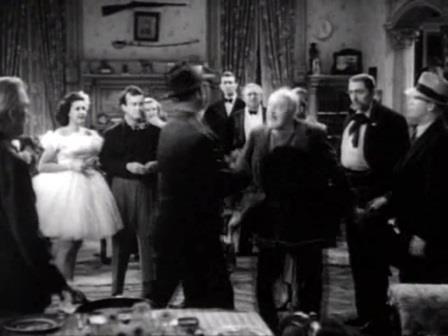 One of the highlights of the film is the visit by an IRS man, Wilbur G. Henderson (Charles Lane, a Frank Capra regular, especially memorable as a crooked lawyer in Mr. Deeds Goes to Town), who experiences firsthand the household bedlam—a xylophone rattling, a ballerina dancing, individuals in hideous masks, servants rushing around, all in the large living room.
One of the highlights of the film is the visit by an IRS man, Wilbur G. Henderson (Charles Lane, a Frank Capra regular, especially memorable as a crooked lawyer in Mr. Deeds Goes to Town), who experiences firsthand the household bedlam—a xylophone rattling, a ballerina dancing, individuals in hideous masks, servants rushing around, all in the large living room.
Henderson tries to convince Grandpa, who has never paid his income taxes, that he owes the government some money. Grandpa argues that he sees no reason to start now, and if he did, he wonders what he would receive in return from the government. When some fireworks go off, and the “Home Sweet Home” sign falls again from an entrance column, the IRS man runs for his life.
When Mr. Kirby and his snobby wife (Mary Forbes, Mrs. Steed in Captain Blood) come to meet the family of their son’s choice for marriage, they arrive on the wrong day and find the household unprepared. Grandpa and Kirby do have a chat of sorts, Kirby sitting in a rocking chair with a “kick.” Grandpa gives the arrogant man an harmonica and suggests it holds the secret of life and happiness.
At one point a great conflagration of ignited fireworks shakes the house and lights up the neighborhood, and everyone, including the Kirbys, are carted off to jail.
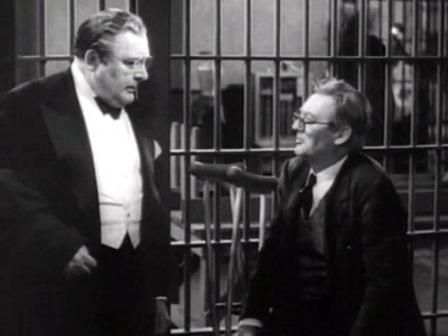 “Scum, are we?” Grandpa shouts to Mr. Kirby in their cell. “What makes you think you’re such a superior human being? . . . You’re poorer than any of these people you call scum because I’ll guarantee at least they’ve got friends.”
“Scum, are we?” Grandpa shouts to Mr. Kirby in their cell. “What makes you think you’re such a superior human being? . . . You’re poorer than any of these people you call scum because I’ll guarantee at least they’ve got friends.”
Alice leaves town because of the way Mr. and Mrs. Kirby have treated her and Grandpa sells the house. Ramsey, just before he dies, calls Kirby a failure as a man, and, haunted by the gift of the harmonica, Kirby realizes Grandpa was right: he has no friends.
With a change of heart, perhaps possible only in comedies, Kirby returns to the Vanderhof home and offers to sell the house back to Grandpa. (Though reformed here, Arnold would be quite different as Capra’s unrepentant villains in Mr. Smith Goes to Washington and Meet John Doe.) Now that Alice has returned and been reunited with Tony, Grandpa buys back the house and everyone is happy.
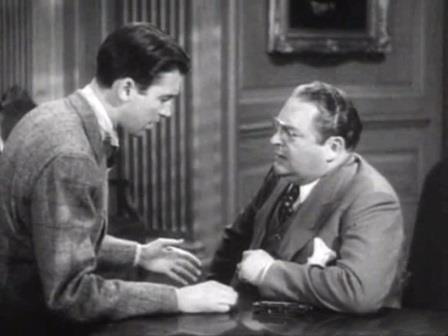 When Grandpa begins playing his harmonica, Kirby takes out his instrument, which he had put in his pocket before leaving his office, and together they play “Polly Wolly Doodle” and the household dances and sings in great celebration. Mrs. Sycamore clutches the “Home Sweet Home” sign. Mrs. Kirby relaxes and falls in with the hilarity.
When Grandpa begins playing his harmonica, Kirby takes out his instrument, which he had put in his pocket before leaving his office, and together they play “Polly Wolly Doodle” and the household dances and sings in great celebration. Mrs. Sycamore clutches the “Home Sweet Home” sign. Mrs. Kirby relaxes and falls in with the hilarity.
Everyone gathers at the dinner table, and Grandpa, concluding grace for the meal, says, “Alice is going to marry Tony. Mr. Kirby’s turned out to be a very good egg . . . We’ve got our health. As far as anything else is concerned, we still leave that up to You. Bring [the food] on, Reba!”
After A Pocketful of Miracles, Capra would retire and live another thirty years—lonely, something of a lost soul and author of a self-serving, often disingenuous autobiography, Frank Capra: The Name Above the Title.
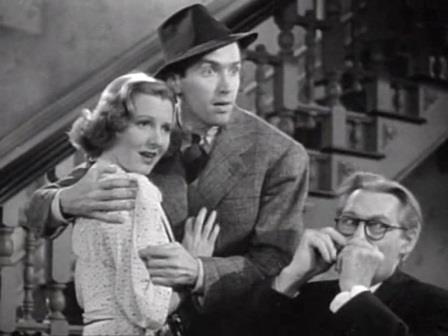 But there remains today the wonder of his lighthearted, if message-driven films of the ’30 and the two from the ’40s. While their innocence and simplicity are out of style in our so-called “sophisticated” age, even now, more than two generations later, these films prompt unguarded laughs and perhaps, if we have an honest heart, just a little bit of envy for a simpler time long gone, whether or not we were alive then.
But there remains today the wonder of his lighthearted, if message-driven films of the ’30 and the two from the ’40s. While their innocence and simplicity are out of style in our so-called “sophisticated” age, even now, more than two generations later, these films prompt unguarded laughs and perhaps, if we have an honest heart, just a little bit of envy for a simpler time long gone, whether or not we were alive then.
If You Can’t Take It with You is somewhat below the standard of the director’s Big Three—It Happened One Night, Mr. Deeds Goes to Townand Mr. Smith Goes to Washington—it has the Frank Capra spirit, all the players are in top form and that is enough to make any of his films worth seeing.
